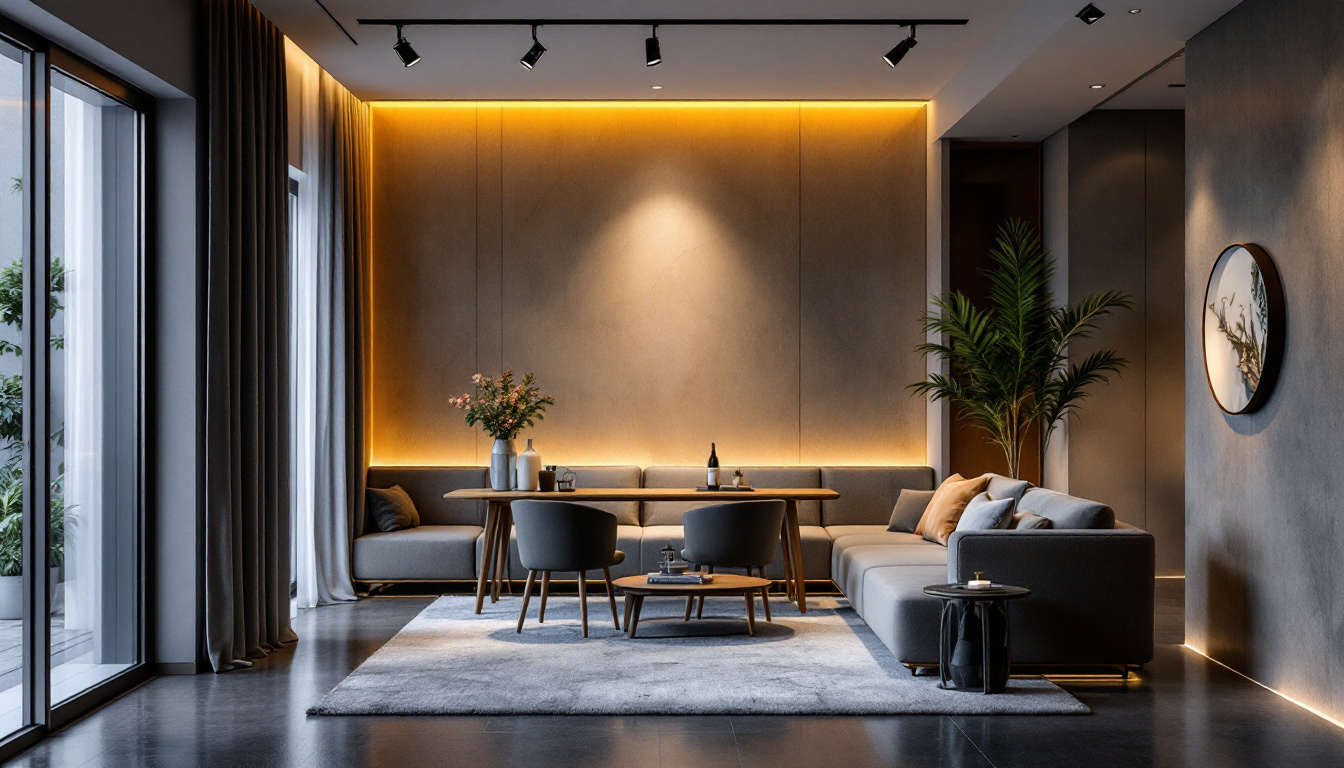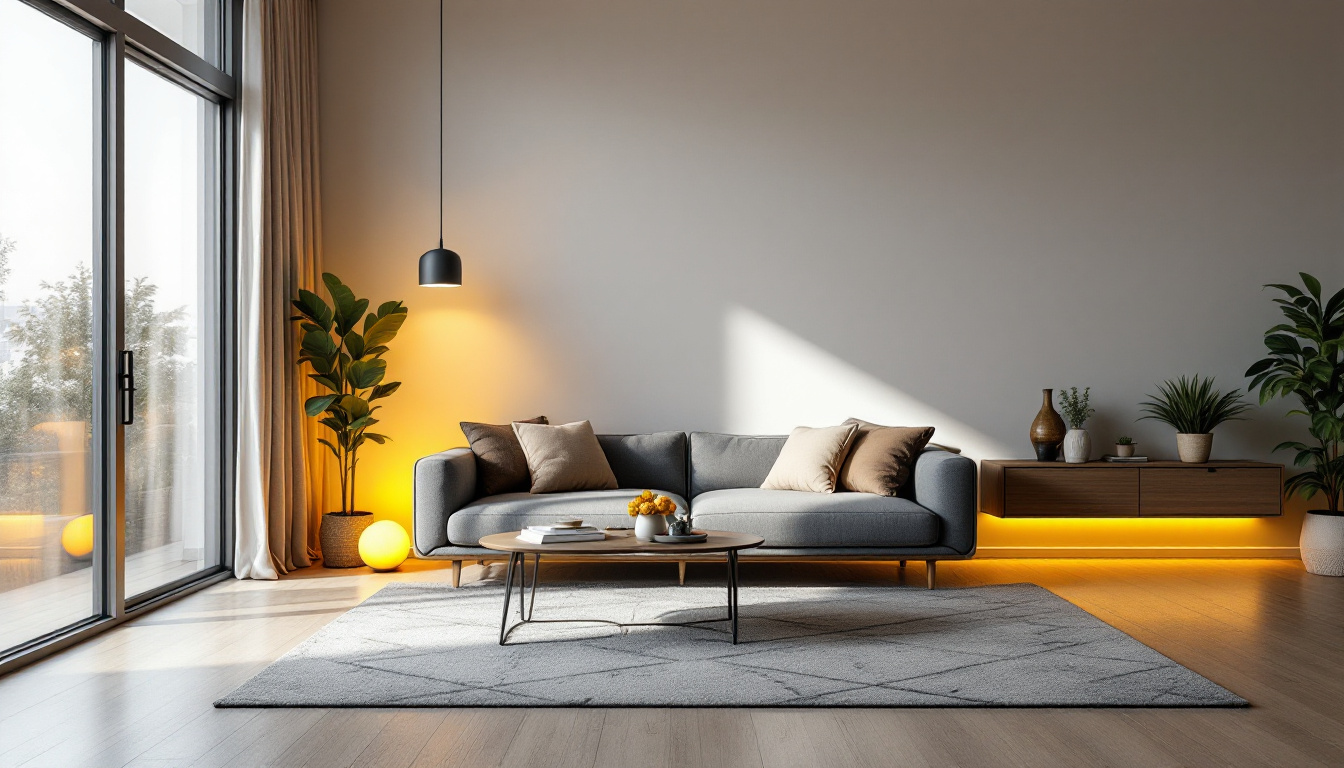
In the ever-evolving landscape of lighting design, strip light fixtures have emerged as a versatile solution for various applications. As lighting contractors, the challenge lies not only in selecting the right fixtures but also in ensuring that these choices remain relevant and functional for years to come. Future-proofing lighting projects is essential for maximizing investment and meeting the dynamic needs of clients. This article delves into strategies for selecting and installing strip light fixtures that will stand the test of time.
Strip light fixtures, often referred to as linear lights, are characterized by their elongated design and are commonly used in commercial, residential, and industrial settings. These fixtures can accommodate a range of lighting technologies, including LED, fluorescent, and incandescent bulbs. Their design allows for even light distribution, making them ideal for various applications, from task lighting in offices to ambient lighting in retail spaces.
There are several types of strip light fixtures available, each with unique features and benefits. Understanding these can aid in making informed decisions for future-proofing projects.
Strip light fixtures can be integrated into various environments, each with specific requirements. Here are some notable applications:
Future-proofing lighting projects involves a thoughtful approach to design, technology, and installation. Here are some critical factors to consider when selecting strip light fixtures.
Energy efficiency is a primary concern in modern lighting design. LED strip lights are the most energy-efficient option available, consuming significantly less power than their fluorescent or incandescent counterparts. By choosing LED fixtures, contractors can help clients reduce their energy bills and carbon footprint.
Additionally, energy-efficient lighting often qualifies for rebates or incentives, further enhancing the project’s cost-effectiveness. When planning future projects, consider integrating smart lighting controls that allow for automated dimming and scheduling, maximizing energy savings. This not only contributes to lower operational costs but also aligns with growing sustainability goals, making it an attractive option for environmentally conscious clients.
The lighting industry is constantly evolving, with new technologies emerging regularly. Staying informed about advancements in lighting technology is crucial for contractors. For instance, smart lighting systems enable remote control and customization, allowing users to adjust brightness, color temperature, and even create lighting scenes through mobile apps.
When selecting strip light fixtures, consider those that are compatible with smart technology. This ensures that installations can be easily upgraded in the future without requiring a complete overhaul of the lighting system. Furthermore, the integration of IoT (Internet of Things) capabilities can facilitate data collection on energy usage and user preferences, providing valuable insights for optimizing lighting performance and enhancing user experience.
Design flexibility is essential for future-proofing lighting projects. Strip light fixtures come in various styles, colors, and configurations, allowing for creative applications in diverse settings. When planning a project, consider the aesthetic preferences of the client and the overall design theme of the space.
Moreover, modular strip lights can be an excellent choice, as they can be easily adjusted or expanded as the needs of the space change. This adaptability ensures that the lighting solution remains relevant and functional over time. In addition, incorporating tunable white technology can enhance the versatility of strip lights, allowing users to shift the color temperature to suit different activities or moods throughout the day, from energizing daylight tones in the morning to warm, relaxing hues in the evening.
Proper installation is vital to the longevity and effectiveness of strip light fixtures. Following best practices can help contractors deliver high-quality results that meet client expectations.
Before installation, a thorough planning phase is essential. Conducting a lighting audit can help identify the specific needs of the space, including the desired brightness levels and the types of activities that will occur in the area. This information will guide the selection and placement of strip light fixtures.
Creating a detailed lighting layout can also help visualize how the fixtures will interact with the space. Consider factors such as ceiling height, wall colors, and furniture placement to ensure optimal light distribution and aesthetics. Additionally, it’s beneficial to incorporate dimming options or smart controls into the layout, allowing for flexibility in lighting levels based on the time of day or specific tasks being performed. This adaptability can greatly enhance the functionality of the space and improve energy efficiency.
Strip light fixtures require proper electrical connections to function safely and efficiently. Ensure that all wiring meets local codes and standards. Using appropriate gauge wire and circuit breakers can prevent overheating and electrical failures.
Additionally, consider the load capacity of circuits when planning installations. Overloading circuits can lead to failures and safety hazards, so it’s crucial to calculate the total wattage of all fixtures on a single circuit. It may also be wise to consult with a licensed electrician to confirm that the existing electrical infrastructure can support the new lighting system. This proactive approach can help avoid costly adjustments later on and ensure that the installation is both safe and compliant with regulations.
After installation, thorough testing is essential to ensure that all fixtures operate correctly. Check for any flickering, dimming, or uneven light distribution. Addressing these issues during the installation phase can prevent future complications and enhance client satisfaction.
Implementing a quality assurance process can also help maintain high standards in installations. Regular inspections and maintenance checks can identify potential issues before they escalate, ensuring the longevity of the lighting system. Furthermore, documenting the installation process and any adjustments made can provide valuable insights for future projects. This record-keeping not only aids in troubleshooting but also serves as a reference for best practices that can be shared with team members, fostering a culture of continuous improvement within the contracting team.
Educating clients about their lighting systems is an often-overlooked aspect of future-proofing. Providing comprehensive information about the operation and maintenance of strip light fixtures can empower clients to make informed decisions about their lighting needs.
Clients should receive clear instructions on how to operate their lighting systems, including any smart features. This can include guidance on adjusting brightness levels, setting schedules, and troubleshooting common issues. Providing this information in a user-friendly format can enhance the client experience and reduce the likelihood of operational errors.
Regular maintenance is crucial for the longevity of strip light fixtures. Educate clients on the importance of cleaning fixtures, replacing bulbs, and checking for any signs of wear or damage. Offering maintenance services can also be a valuable addition to a contractor’s portfolio, ensuring that clients receive ongoing support.
As technology advances, clients may wish to upgrade their lighting systems. Providing information about potential upgrades, such as new smart features or energy-efficient options, can help clients stay informed and prepared for future changes. Establishing a relationship that encourages ongoing communication can lead to repeat business and referrals.
Future-proofing lighting projects with strip light fixtures requires a strategic approach that encompasses energy efficiency, technological advancements, design versatility, and installation best practices. By considering these factors, lighting contractors can deliver solutions that not only meet current client needs but also adapt to future demands.
Education and support are equally important in ensuring client satisfaction and the longevity of lighting systems. By empowering clients with knowledge about their lighting choices, contractors can foster lasting relationships and enhance their reputation in the industry.
In a world where lighting technology is continuously evolving, staying ahead of the curve is essential for success. By embracing innovation and prioritizing quality, lighting contractors can future-proof their projects and ensure that their work remains relevant for years to come.
Ready to take your lighting projects to the next level? At LumenWholesale, we provide you with the cutting-edge, spec-grade strip light fixtures you need to future-proof your installations. With our unbeatable wholesale prices and commitment to quality, you can trust that you’re getting the best value for your investment. Say goodbye to middleman markups and hello to a vast selection of reliable, high-performance lighting solutions. Plus, with free shipping on bulk orders, your next project is just a click away. Don’t settle for less—choose LumenWholesale for quality, affordability, and convenience. Wholesale Lighting at the Best Value is within your reach.

Discover essential insights into exit emergency combo lighting tailored for lighting contractors.

Discover how exterior motion sensor lights are revolutionizing the lighting industry by enhancing security, energy efficiency, and convenience.

Discover the transformative power of low profile track lighting with expert insights from seasoned lighting contractors.

Explore the transformative impact of replacing can lighting in modern interiors.